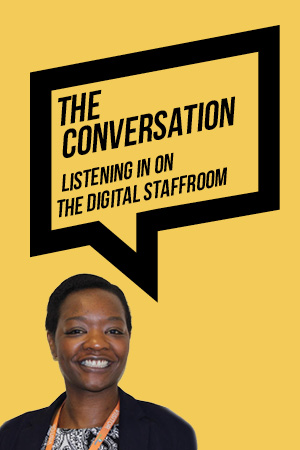Publisher
SAGE
ISBN 10
1529721970
Published
23 Dec 2020
Khera Potts discovers a book with bags of inspiration but little guidance on how to follow in braver women’s footsteps
The sleepless nights, the wardrobe re-assessment – hallmarks of a pending return to work following maternity. #WomenEd’s Being 10% Braver – a follow-up to its 2019 volume – arrived at the perfect time for me and I was hoping it would provide coping strategies to re-build my confidence as a leader and teacher.
In line with #WomenEd’s values, this is effectively a community-sourced story book. Diverse female colleagues from across the education spectrum share their journeys through challenges such as returning to work after illness or maternity, undergoing the menopause or belonging to a group with a protected characteristic.
Much of it is very familiar, often sadly. Debra Rutley’s honest account of living and teaching with depression is a case in point. Likewise, I suspect I’m not the only one who will smile ruefully at Rachael Paget’s description of her first words after waking from a medically induced coma: “I never set cover!”
Essentially, the book charts how by being ‘10% braver’ (perhaps best explained as the deliberate practice of confidence) the contributors were able to make positive changes to their professional lives. The case studies follow colleagues who have used their experiences to effect personal, cultural and structural change, such as flexible headship (Mitchell and Turner), establishing collaborative professionalism (Rankin) and becoming “the one who buys the chairs” (Goldsmith).
Unfortunately, ways to challenge systemic issues need to be sifted out
The design of the book itself makes it very readable. Each chapter takes around ten minutes or so to read, so you can easily dip in and out. Each is bookended with a summary of key points and a “Passing on being 10% braver” box-out, so you are quickly able to see whether it is relevant to you how you might put it into practice. Particularly useful is the references section, which allows further learning about policy and law on specific issues.
Some chapters allow reflection on and awareness of others’ perspectives, which may provide starting points for growing awareness and making change. Claire Neaves’ well-researched chapter on authenticity as an LGBT+ leader and role model is a stand-out. It describes the complexities of being an LGBT+ teacher and having to skilfully navigate between challenging those who would believe it’s no longer an issue and being inclusive of those who know it is and want to better support their colleagues and students. Likewise, Ruth Golding’s chapter on leading with a disability offers practical ways to challenge assumptions, communicate and build confidence.
Seemingly absent are the experiences of women of colour – although they do contribute chapters on other themes. Penny Rabiger does challenge all of us to “make sure you’re not the one blocking the view” in terms of diversity, reminding us that “you’re not an innocent bystander; you’re a change agent with an opportunity and a responsibility”. For me, the section of which her chapter is a part, “Tackling an Unfair System”, was the most useful.
Perhaps it is a naive need to make sure I learn something from reading an educational book that means for me there was a missed opportunity here. In the final chapter, Vivienne Porritt reminds the reader of the responsibility of the #WomenEd community to change things so that future generations of female teachers and leaders do not face the same issues. Unfortunately, as the stories focused on the personal and professional, ways to challenge policy and systemic issues need to be sifted out where they appear.
What do I do if my context isn’t as open to change as some of those I read about, or if I’m struggling to have conversations about what I’m experiencing? What chapter should I put under the nose of my willing but time-poor headteacher? Confidence is a thread that weaves many of these stories together, but what can I do if I have none? How do I structure that? Yes there is a chapter on imposter syndrome – but what do I do about the factors that make this endemic in schools?
Still, the fact you are reading this – my first published piece of writing – means perhaps even just the call to be ’10% braver’ works, whatever that looks like.













Your thoughts